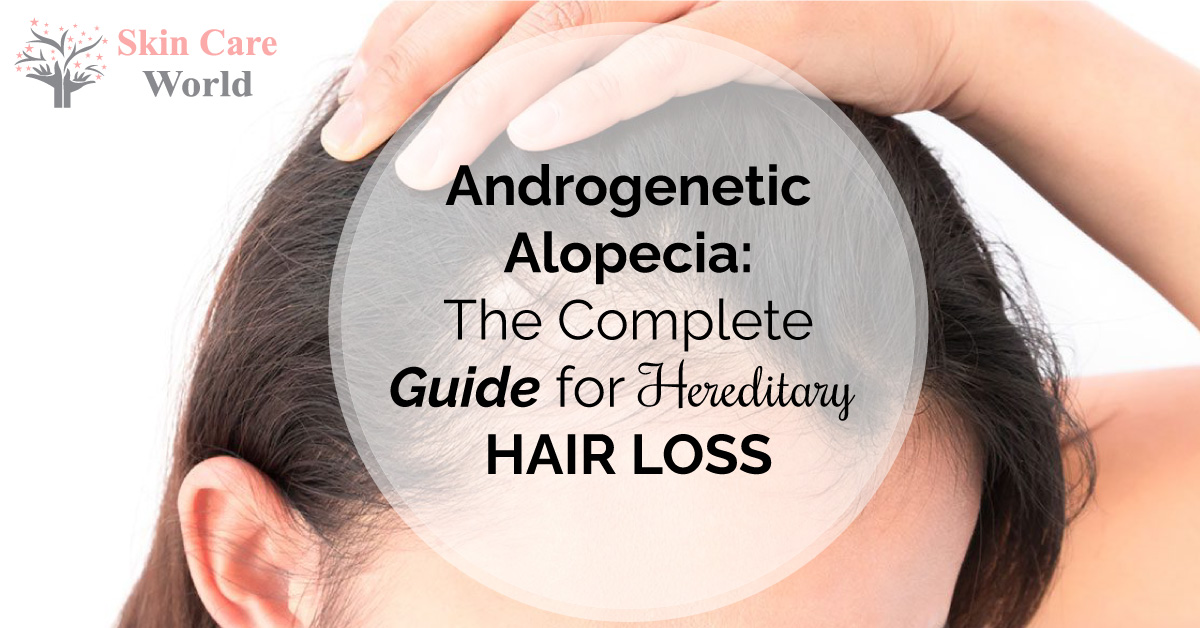
Men and women might suffer from androgenic alopecia, a hereditary condition that affects both sexes. As early as their teens or early twenties, sufferers of this sickness begin to lose their hair due to the disease. They don't start to notice significant hair loss until they are in their 30s or later." Find out about androgenic alopecia and the treatment options before it's too late! Continue reading to learn more!
Androgenetic alopecia (male pattern baldness) is usually associated with men; however, it can also afflict women (female pattern baldness). Like blue eyes or curly hair, a hereditary attribute is passed down from generation to generation. It's possible that our inherited DNA can give us bad luck: Hair loss is a good example. In any case, the good news is that it's treatable.
Even if there are distinct stages, progress may be inconsistent. No significant hair loss or receding hairline is seen in this early stage. Men's hairlines begin to decrease around their temples in the second stage. A common problem for women is hair loss on the scalp. An M-shaped pattern will emerge in the lives of men.
During the third stage of androgenetic alopecia, both temples will begin to recede, and hair will start to fall out. As a result, the hairline decreases, and hair loss speeds further. There's only a tiny amount of hair left on the crown by the end of the sixth stage. At this point, nearly all of a person's head hair is gone. There is only a small amount of fringe left on the sides and back of the garment.
our genes are essential for hair loss, but additional variables might worsen the problem and speed up hair loss. Consider the following as possible contributors:
Androgenetic alopecia stages include times of hair loss and periods of no change in hair growth. When hair loss begins, it may progress over three to six months before stabilizing for an extended period, sometimes up to 18 months.
Symptoms of androgenetic alopecia include receding hairlines and thinning hair. Having receding hair causes an M-shape to form in men. All over the body, women experience hair thinning and a delay in creating new hair.
Treatment options for androgenetic alopecia range from topical therapies to hair transplants, but no cure exists. However, even if vitamin shampoos provide sustenance to hair follicles, they will not stop hair loss. A drug like Propecia or finasteride and a topical therapy like Rogaine may be necessary for more extreme situations (Minoxidil). Laser therapy may also be helpful.
Additionally, Regenera Activa therapy can be used as an alternative. Permanent hair restoration can only be achieved through hair transplant surgery. Both follicular unit extraction and follicular unit transplantation are widely used in Singapore for hair transplantation (FUE).
Yes, in a nutshell. The effects of androgenetic alopecia are irreversible, even if there are techniques to cure or possibly reverse them.
Androgenetic alopecia cannot be healed because it is a genetic disorder passed down from generation to generation.
Even though you may have been genetically prone to hereditary hair loss diseases like androgenetic alopecia, there are numerous things you can do to prevent DHT from wreaking havoc on your hair.
Androgenetic alopecia is, unfortunately, a prevalent ailment in both sexes. The future of treatment and research is bright, nevertheless. Don't let hair loss or hair thinning hold you from living your best life.

